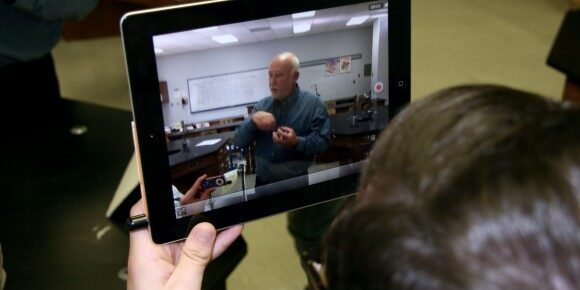Effective communication is a requirement. Your students’ professional successes in the 21st Century will depend largely on their ability to use collective communication outlets, a.k.a. MEDIA. They must master media both as a consumer and creator.
Communication is not only sending and receiving a message. It is not defined by consuming a few broadcast news channels or a local newspaper. It involves sorting through text, images, video and data from dozens of sources and sometimes publishing or broadcasting what you have to say across the globe.
While we do not know exactly what jobs in the future will be, we do know successful people in the 21st Century will be those creating products and services using the latest technology, and those communicating concepts, products and processes affectively. Students with both talents stand to win big. Bright students are shocked when I tell them, “if you can not explain your great idea it does not matter.”
Understand media platforms. Netflix, YouTube, HBOGO, iHeartRadio, Shazam, Spotify, Hulu and other sources put vast amounts of content at ones fingertips. Social platforms Snapchat, Instagram, Linkedin, Facebook, Skype, Twitter help instantly put your message in front of thousands of friends, strangers, customers and business associates. Then there is the old fashion phone, face-to-face, presentation, email and written correspondence. Even a simple personal email may now get shared with millions around the world.
You may not care what Kim Kardashian or Lady Gaga send across multiple media platforms, but they reach more people then most television shows or publications. Lady Gaga by-passed traditional recording industry channels (record stores, radio stations, major concert venues, traditional media) to build one of the world’s most recognizable brands and media outlets in addition to selling millions of songs, albums and concert tickets.
Building your brand like any other product. Yes, in this modern media world your students need to think of themselves as a brand. What are their “customers” going to think of them and expect from them? Customers may be employers, potential investors, collaborators, other media outlets, social and professional groups or voters.
Target your audience. Successful users of any media first understand their customer (audience). Master communicators appreciate who is listening and how the audience wants to receive information. Communication is modified to meet the needs of their audience. Successful communicators work to deliver messages where and when the audience is best prepared to listen and react.
Create a clear message and give your audience a reason to care. While there are differences in each media, good story telling has similar elements. Even if you explain how you engineered a bridge, there are still characters, a setting, a conflict and a resolution to this tale. We learn and retain best through good story telling.
Use a complete media toolbox. How are you communicating? In the recent past we taught written prose. Those that excelled at language might create poetry. And those that mastered “multi-media” became minstrel storytellers combining poetic prose and music to enhance the power and memorability of their story.
Students use photos, memes, video, music, mashed up video, emoji, re-broadcast messages, and live communications to convey thoughts and feelings. What is their picture saying? How can it be changed to make a point more clear, powerful and affective? Did I make the audience care?
Learn what you don’t know and critically challenge what you think you know. A flood of information, half-truths, data and opinions make it harder for your students to keep the facts straight. With their increased ability to communicate, I would argue their communication takes on a heightened importance. This makes it even more important to understand the subject.
Your students’ ability to quickly analyze data and apply it to a situation is critical. As a creator of media, students have the power to spread truth or fiction. Relying on and passing on bad information can rapidly destroy one’s brand.
Making a strong statement based on limited information is a dangerous action for a modern communicator. With regard to data, fact checking and truly understanding an issue, I often pass on these pearls of wisdom.
- Statistics don’t lie, but statisticians do.
- 87% of statistics are made up on the spot.
- Two seemingly opposing opinions can both be true or false.
Listen to your audience. Student may work hard to craft a message using videos, images and words that represent the truth and their point of view brilliantly. They may target their audience masterfully. They may still fail by not listening to their audience, because at the end of the day it matters more what your audience hears then what you think you said.
Practice with a purpose. If you want to be good at something you have to practice. If you want to be great, practice a lot. Write, talk, record, review, take pictures. Look back on your work and ask yourself how to make it clearer, more impactful.
Nine Rules for 21st Century Master Communicator
- Effective communication is a requirement.
- Understand media platforms.
- Build your personal brand like any other product.
- Target your audience.
- Create a clear message and give your audience a reason to care.
- Use a complete media toolbox.
- Learn what you don’t know and critically challenge what you think you know.
- Listen to your audience.
- Practice with a purpose.



